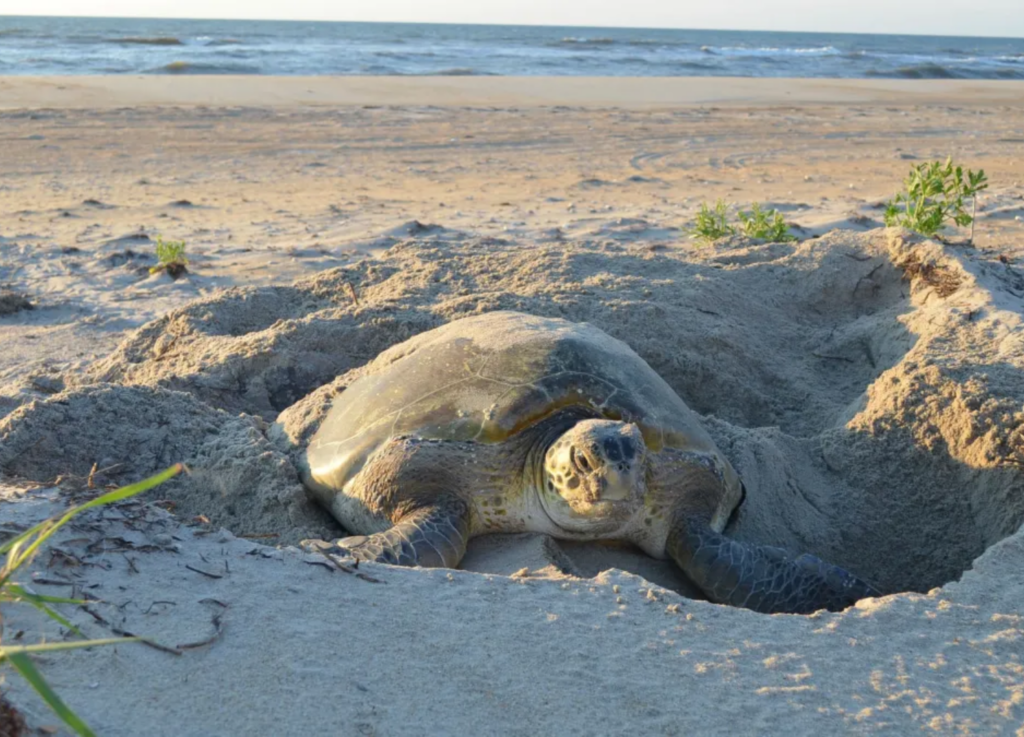Table of Contents
ToggleA Miracle of Nature: Olive Ridley Turtles at Bhogwe Beach – Nesting, Conservation & Hatching
Introduction
Nestled along Maharashtra’s Konkan coast, Bhogwe Beach is not just a paradise for sun-seekers and water sports enthusiasts—it’s also a critical sanctuary for the endangered Olive Ridley sea turtles. Every year, between January and February, these ancient mariners return to Bhogwe’s shores to perform a timeless ritual: laying their eggs under the cover of darkness. Witnessing this spectacle, followed by the heartwarming hatching of tiny turtles, is a testament to nature’s resilience.
Here’s your deep dive into the world of Olive Ridley turtles at Bhogwe Beach, their conservation, and how you can be part of their survival story.

The Olive Ridley Turtle: A Threatened Marvel
| Feature | Details |
|---|---|
| Scientific Name | Lepidochelys olivacea |
| Status | Vulnerable (IUCN Red List) |
| Unique Trait | Mass nesting (arribadas) but solitary nesting at Bhogwe |
| Threats | Habitat loss, fishing net entanglement, and poaching |

The Nesting Ritual at Bhogwe Beach
1. The Arrival
Timing: Female Olive Ridleys swim thousands of kilometers to return to their natal beaches.
Peak Nesting: Mid-January to late February.
Process: At night, females haul themselves ashore, using their flippers to dig deep pits in the sand.
2. Egg-Laying Process
Nest Depth: 1–1.5 ft deep chamber.
Clutch Size: 100–150 soft, ping-pong-ball-sized eggs.
Camouflage: The turtle meticulously covers the nest with sand to hide it from predators like crabs and birds.
3. Challenges
Natural Threats: Stray dogs, monitor lizards, and birds prey on eggs.
Human Impact: Beach tourism, plastic pollution, and artificial lights disorient nesting turtles and hatchlings.
Conservation Efforts at Bhogwe Beach
1. Nest Protection
Relocation: Eggs are moved to hatcheries to shield them from predators and human interference.
Fencing: Nests are marked and barricaded with bamboo sticks and nets.
2. Community Involvement
Beach Clean-Ups: Volunteers remove plastic debris and fishing nets.
Awareness Drives: Locals and tourists are educated about reducing light pollution and maintaining distance.
3. Government Policies
No-Go Zones: Restricted access during nesting season.
Fishing Regulations: Seasonal bans on trawling to prevent turtle deaths in nets.
The Hatching Miracle: March–April
Incubation Period: 45–60 days, usually hatching in March or early April.
The Great Escape: Hatchlings use moonlight to navigate to the sea.
Survival Odds: Only 1 in 1,000 hatchlings reaches adulthood.
How to Witness This Wonder Responsibly
Guided Night Walks: Join NGO-led tours.
No Flashlights or Photos: Bright lights disorient turtles.
Stay Silent & Distant: Keep at least 20 feet away from nesting females.
Best Time to Visit
| Activity | Months |
| Nesting | January–February (peak in late January) |
| Hatching | March–April |
(Ask local conservationists for updates.)
How to Witness This Wonder Responsibly
How You Can Help
Volunteer: Join beach clean-ups or nest-monitoring programs.
Donate: Support NGOs like SAVE Turtles Konkan or Wildlife Trust of India.
Spread Awareness: Share the importance of turtle conservation on social media.
Bhogwe Beach: Beyond Turtles
While visiting, explore:
Scuba Diving: Discover coral reefs and marine life.
Parisa Beach Resort: Eco-friendly stays that promote turtle conservation.
Sindhudurg Fort: A historic sea fortress nearby.
Conclusion: Guardians of the Future
The Olive Ridley turtles of Bhogwe Beach are more than just a natural wonder—they’re a symbol of hope. Thanks to relentless conservation efforts, these ancient creatures continue to grace Maharashtra’s shores, reminding us of our duty to protect the fragile balance of marine ecosystems.
Visit, but don’t intrude. Witness, but don’t interfere.
For updates on nesting dates or volunteer opportunities, contact Bhogwe Turtle Conservation Society or check their YouTube channel for live hatching videos!
Have questions or want to share your turtle encounter? Comment below! 🐢💙
